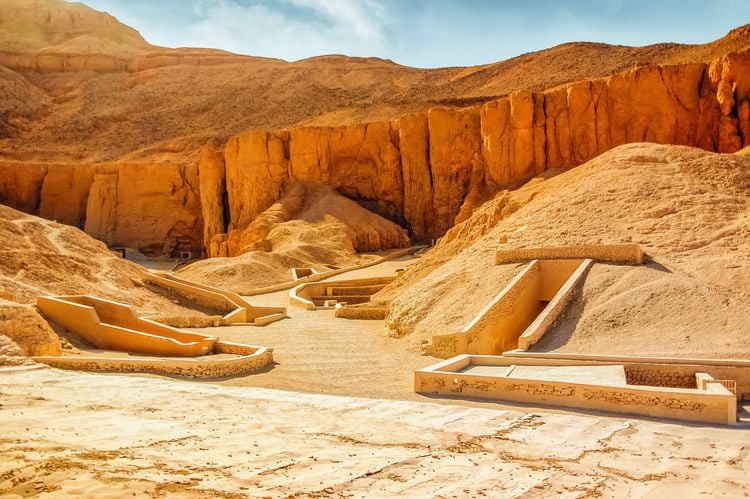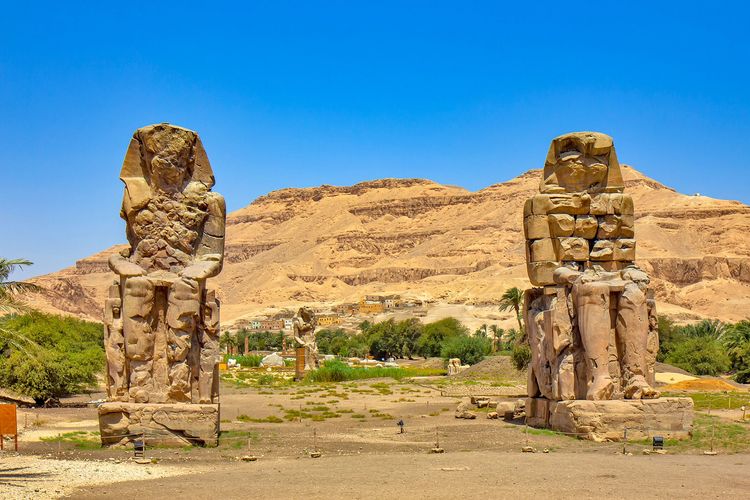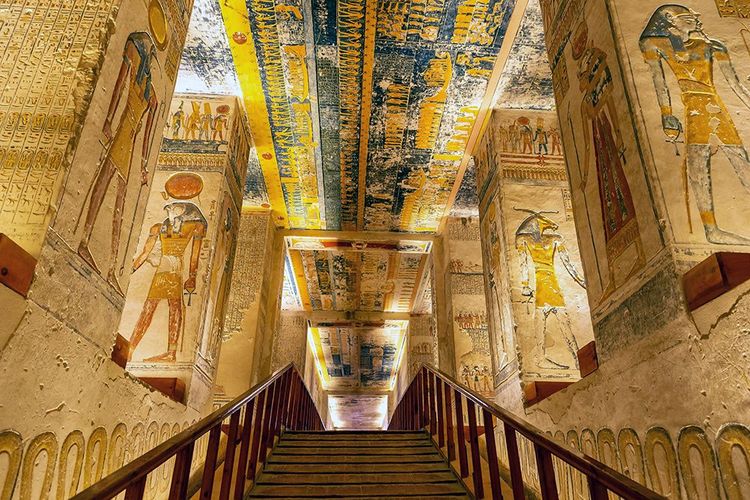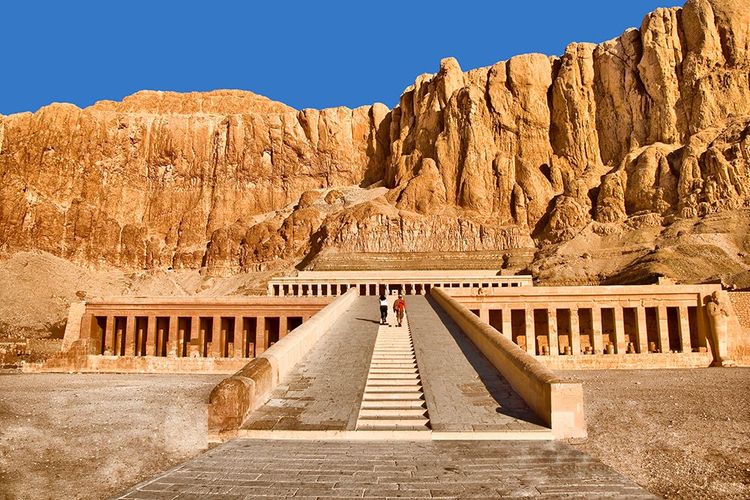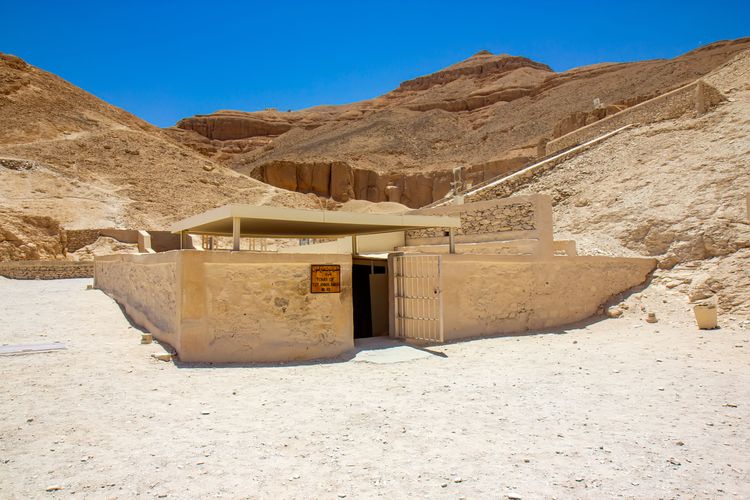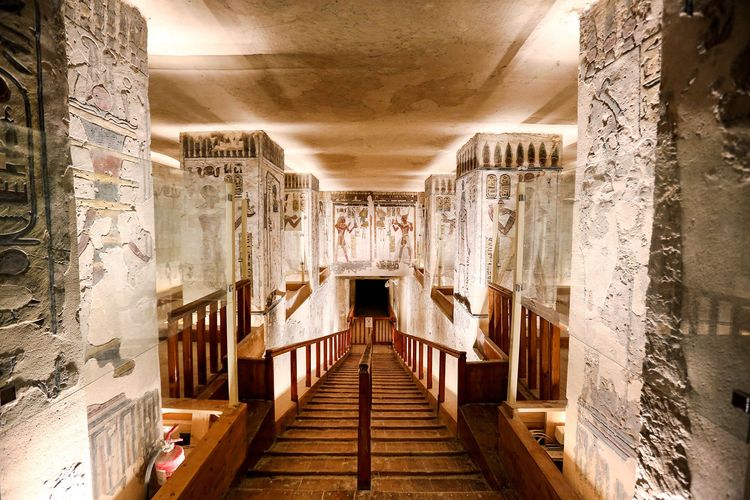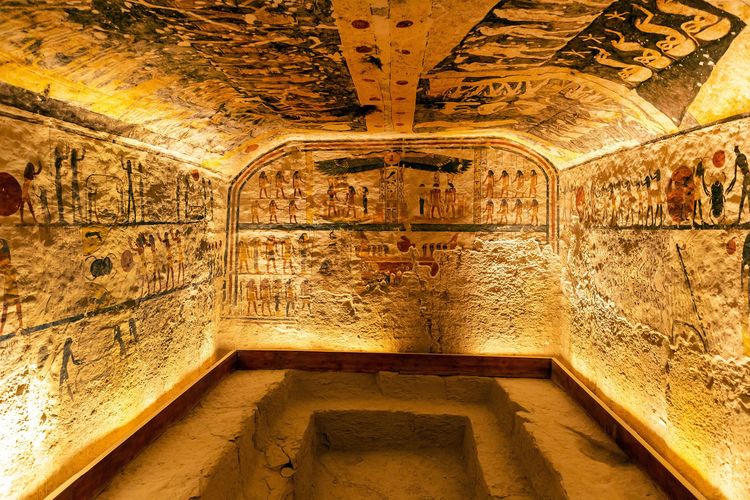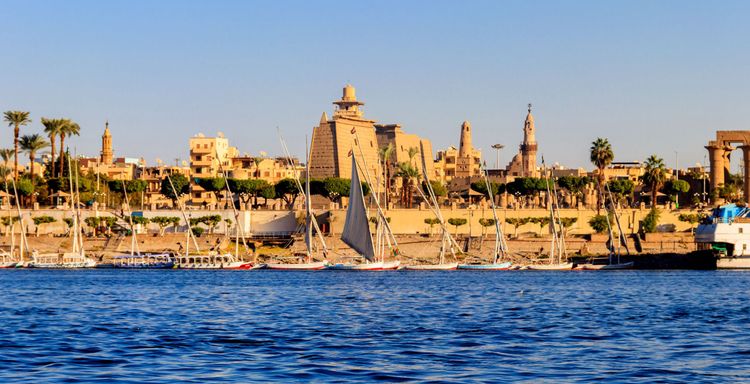Your hotel will probably be in Luxor, on the east bank of the Nile, as this is where the hotel trade is concentrated. But there are also a few hotels on the west bank, on the road that leads to the very sites you have come to visit (Valley of the Kings, Valley of the Queens, Hatshepsut's funerary temple, Valley of the Nobles, the Colossi of Memnon, Medinat Habu, Valley of the Monkeys). Think about it to optimise your organisation.
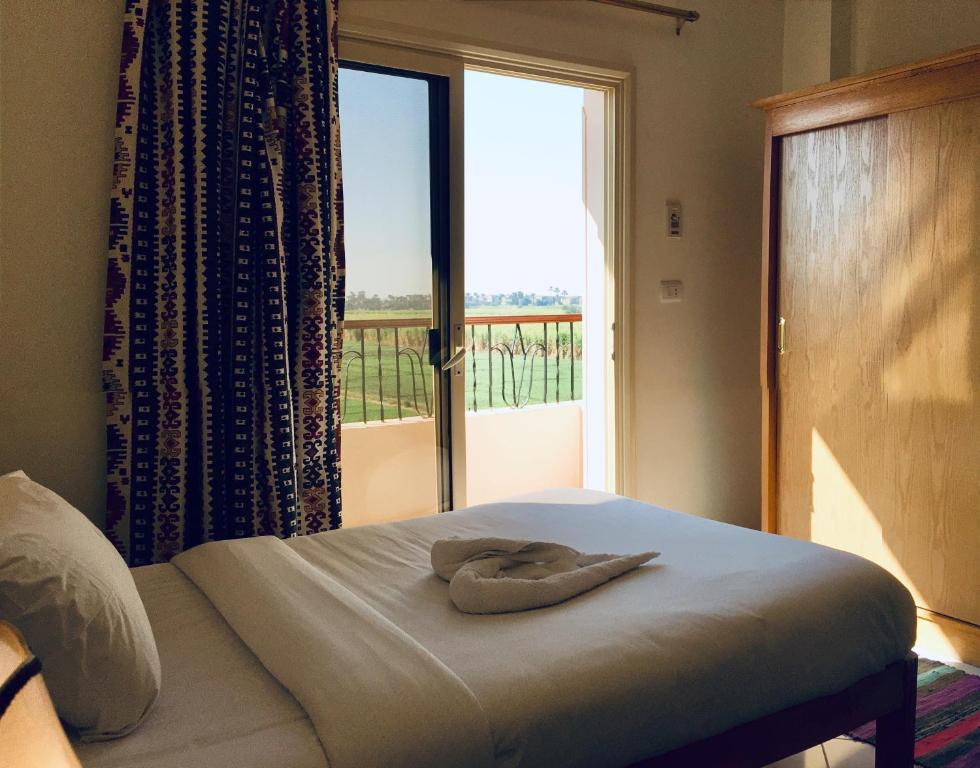 Luxor
Luxor
